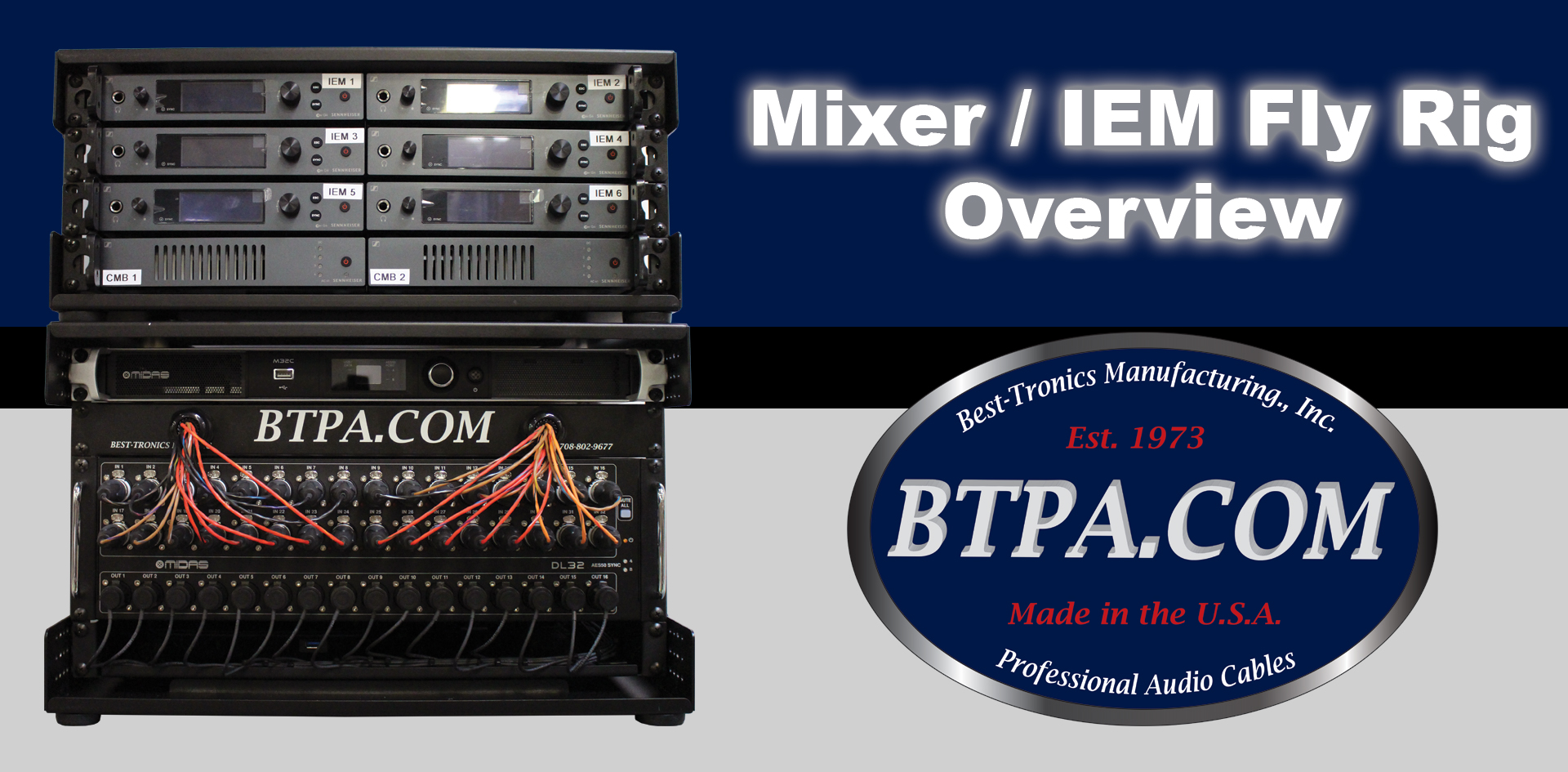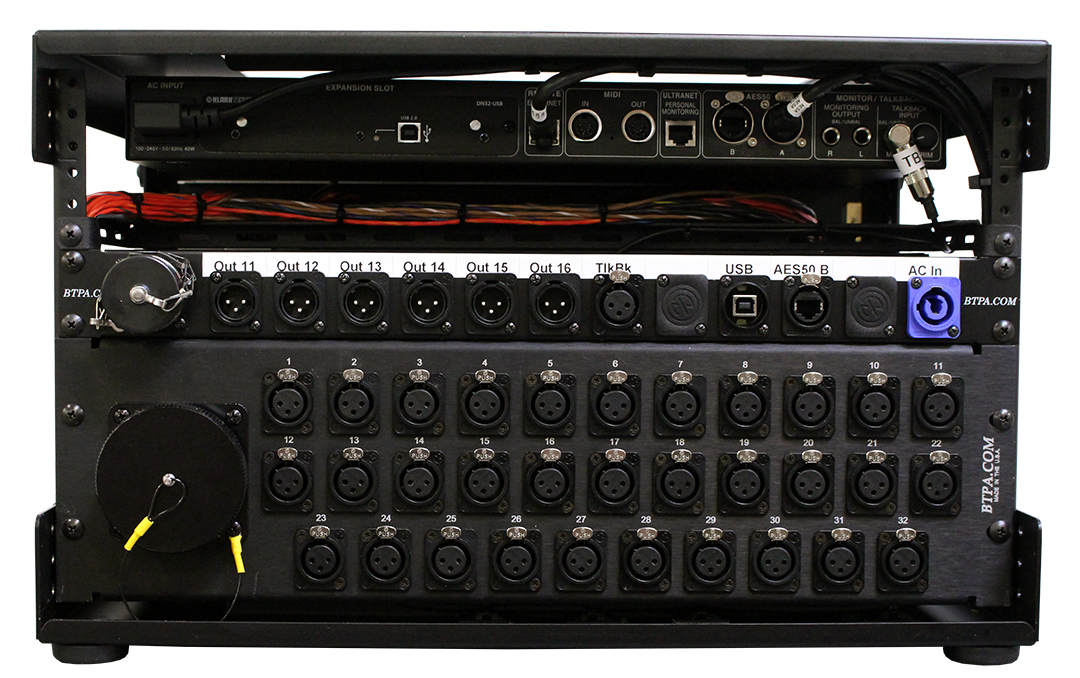- Rig Building
- Touring Essentials
- 3.5mm
- Adapters
- Balanced/Stereo
- Bulk Product
- Digital
- DMX
- EtherCon / Ethernet
- Fiber Optic
-
Footswitch Cables
- RJM
- Bogner Amp Cables
- Egnater Cables
- Engle
- Fender Amp Cables
- Framus Cables
- G-Major
- Hughes And Kettner Cables
- Laney
- Marshall Amp Cables
- Mesa Amp Cables
- Metropoulos
- Mezzabarba
- PRS Amp Cables
- Peavey Amp Cables
- Randall Amp Cables
- Red Plate
- Rivera Cables
- Soldano Amp Cables
- VHT/Fryette
- Voodoo Lab Control Switcher Cables
- Fractal Audio
- Guitar/Line Level
- iPod/MP3
- Looms
- MIC/XLR
- Midi
- Multipin
- Patch Panels
- Power
- RCA/Phono
- Snakes
- Speaker
- Tattoo
- Video
- Wireless
- Cambium Products
BTPA Mixer / IEM Fly Rack Build
03 Dec 2021
BTPA Mixer / IEM Fly Rack Build

If you follow us on Instagram or Facebook, you may know that we heavily celebrate #FlyRigFriday If you don't - we post pictures of fly rigs we build on Fridays. Good, now you are up to speed!
Fly Rigs are becoming more and more popular amongst the touring world. We have been doing quite a bit of these and they are steadily becoming the main type of rig we are building for customers. They are nice because they can be easily torn down and setup at each gig, whilst at the same time be checked on airlines for free or next to nothing.
Main Overview
Typically, the two main fly racks people are needing are a Mixer Rack and an In Ear Monitor (IEM) Rack. These typically go hand in hand as the mixer rack is used to mix your IEMs. The IEMs are needed to have something to mix (that isn't FOH). Then, of course, you get into guitar world, bass world, playback, keys, you name it. The IEM and Mixer rack, however, are typically the first two items artists go with when converting to fly rigs.
We build each rack with panels on the back of them. This allows the user to easily make their patches for setup. It also provides locking connection points + reduces wear and tear on the gear from constant plugging/unplugging. Taking this a step further, we use multipin connections to patch multiple channels with a single cable and connection point. This really speeds up the setup and teardown process!
Mixer Rack
The rig in the video showcases a fly rig with rack mixer, digital snake, input split, and wireless router. The most common rack mixers we see (at the time of writing this) are the Midas M32C and Behringer X32. There are certainly plenty of other rack mixers out there (Waves, Presonus, Allen & Heath, etc.). The Midas M32C mixer and Midas DL32 digital snake as it allows for 32 inputs and 16 outputs with a 4U footprint.
On the back of the mixer racks we wire up an input split. This is so that the artist can mix their own IEMs without affecting the mix going to FOH. On the setup shown here (which is the most common) we have (32) XLR inputs on the split. These are split to a hard-wired cable tail that goes to the DL32 in the rack & a 100 pin multipin output. The 100 pin multipin output is a single connection point for all 32 channels. This patches to FOH for the house mix.
Underneath the DL32 is a rack shelf with a wireless router mounted. This allows the user to control the M32C mixer with a device remotely (i.e. tablet, laptop, etc.).
Additionally on the back of these racks we include a 1U panel. The 1U panel is where more variance comes in, per artist setup. Typically, there is always a multipin output to patch the DL32's outputs into the IEM rack. This allows a single connection point for all of the IEMs. Next are XLR outputs for the leftover DL32 outputs, XLR input for talkback, EtherCON for the AES50B, and a single powerCON Input.
All items within this rack are powered by a single powerCON input. All items within the rack accept 100-240V AC power, meaning they can function in most continents without the need for a step up/down converter.


IEM Rack
The IEM racks are pretty straight forward. They contain X amount of IEMs for the artist and the appropriate amount of antenna combiners.
The back panel of these feature antenna ports for the combiner's antenna, a multipin input for feeding all of the IEMs with audio on a single cable, and power.
Posted on Categories :
Rig Building & Wiring


Comments